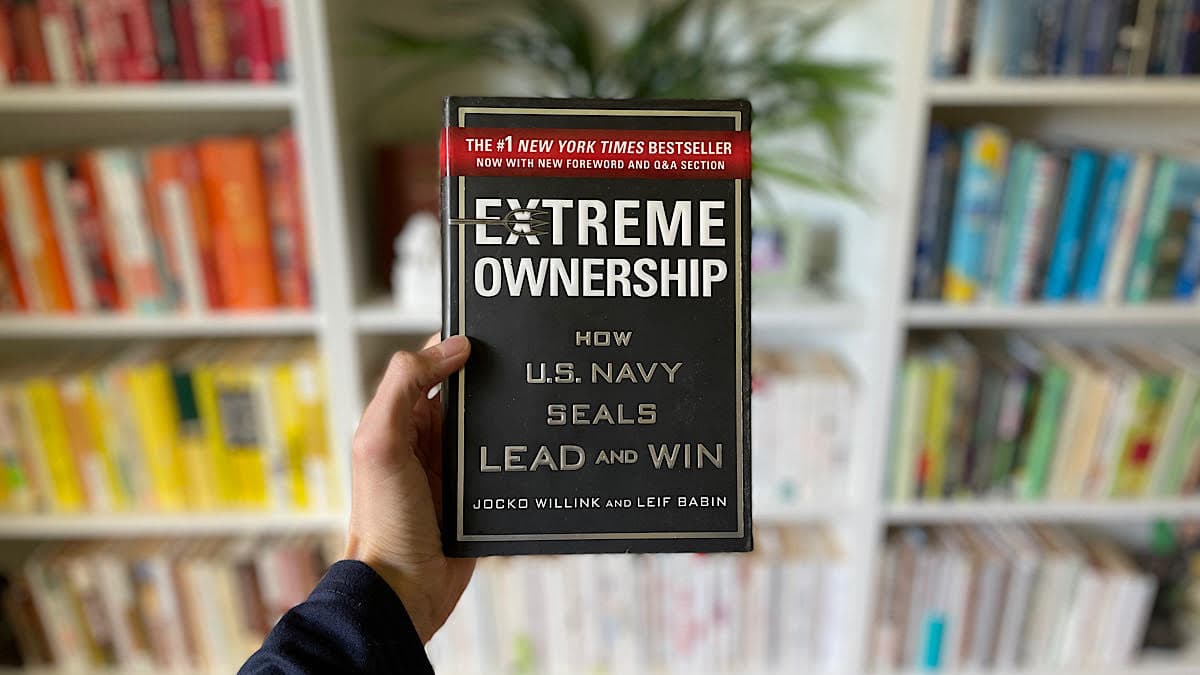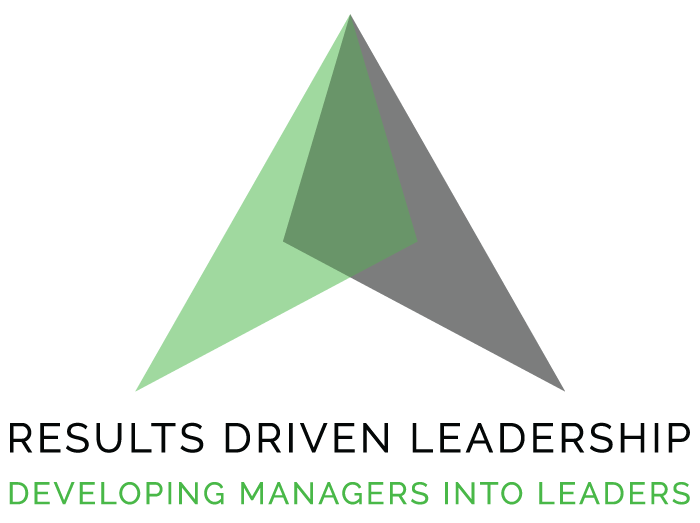I’m Vaughn Sigmon, and my journey with leadership has a personal genesis.
Raised by a 30-year Army Veteran with a Bronze Star and a Purple Heart from World War II, I have had the privilege of learning about leadership from an early age. My father’s influence has guided my 40-plus-year career, enabling me to develop and refine my front-line leadership style in business.
Alongside these life-long lessons, I’ve drawn inspiration from military leadership philosophies, particularly those articulated by Jocko Willink and Leif Babin in their book “Extreme Ownership: How US Navy SEALs Lead and Win.”

Leadership Under Extreme Conditions
Leif Babin experienced the challenges of Hell Week twice: once as a candidate and then as an instructor observing a new generation of Navy SEAL candidates. Hell Week is a grueling five-and-a-half-day event within the SEALs’ Basic Underwater Demolition/SEAL Training (BUD/S), designed to filter out those who aren’t mentally or physically up to the task.
According to Babin, candidates undergo a litany of physically exhausting activities—perhaps none more telling than the boat races. Candidates are grouped into boat crews and subjected to a series of races, paddling heavy inflatable boats over considerable distances. The instructors had the teams engage in a constant string of boat races, requiring the teams to carry their boats atop their heads to shore, paddle the boat to a specific marker, dump themselves out of the boat and get back in, and carry through a path to the endpoint back on land.
The SEALs candidates were grouped by height into boat crews of seven men and assigned to a WWII-relic inflatable boat that weighed more than 200 pounds. The most senior-ranking sailor became the boat crew leader responsible for receiving, transmitting, and overseeing the execution of the lead instructor’s orders.
There was a clear pattern emerging as the races proceeded, Babin writes. Boat Crew II was almost guaranteed to come in first place in every race, and Boat Crew VI was almost guaranteed to come in last place. Babin and the most experienced instructor in attendance, whom Babin calls Senior Chief, kept their eyes on the leader of Boat Crew VI, an inexperienced officer who was losing his cool in every race. His behavior was unacceptable for a SEAL.
Babin and the Senior Chief decided to try a leadership experiment. Before the start of the next race, they announced that the leaders of Boat Crews II and VI would be swapping teams. Babin says he saw the way the struggling crew leader seemed elated while his superior seemed to process frustration into resolve.
Over the next hour of races, Boat Crew II performed well but never took first; Boat Crew VI won nearly every race.
“Gone was their cursing and frustration,” Babin writes about Boat Crew VI. “And gone too was the constant scrutiny and individual attention they had received from the SEAL instructor staff. Had I not witnessed this amazing transformation, I might have doubted it.”
It was a perfect training example of the principle of “Extreme Ownership,” which Willink taught him as commander of Task Unit Bruiser when they were deployed in Ramadi. It’s the simple idea that all responsibility for any success or failure ultimately rests on a leader.
Bridging the Battlefield and the Boardroom
Former US Navy SEAL Jocko Willink, co-author of “Extreme Ownership” and Babin’s former commander, often speaks about how leadership traits honed in the military can translate to civilian life.. His message is clear: “We solve problems through leadership, through interacting with other human beings.”
Five Tactics for Effective Leadership
Willink boils down the complexities of leadership into five primary tactics:

1. Listen
Listening is more than just a passive activity; it’s an underrated skill that can significantly impact the outcome of any mission, whether in combat or a corporate environment. In a modern, decentralized workspace, it’s crucial for everyone to have a say.
Listening is an essential yet often overlooked leadership skill that holds the potential to dramatically affect the outcome of both military missions and business endeavors. Jocko Willink emphasized this in his teachings, advising leaders to adopt a “decentralized command” approach that allows for input and feedback from all team members.
Listening goes beyond merely hearing what others are saying; it’s about understanding the nuances, asking probing questions, and genuinely considering the viewpoints presented. In a decentralized environment, where the hierarchical chain of command is flattened and team members can be physically dispersed, everyone needs to be aligned with the mission and goals.
For this to happen effectively, listening must be proactive. It forms the basis of trust, ensuring that everyone feels their input is valued and thereby encouraging more open dialogue. In my own leadership development, heavily influenced by my father’s military leadership and further honed in over 40 years of front-line experience in business, listening has remained a cornerstone. It allows for the kind of mutual respect and understanding that turns a group of individuals into a cohesive, effective team.
2. Build Strong Relationships
Relationships form the bedrock of effective leadership. “If we have good relationships, then we can have trust between us, listen to each other, influence each other and make decisions based on our common shared knowledge,” Willink says.
Building strong relationships is not just an ancillary aspect of leadership; it’s a fundamental cornerstone for achieving collective success. Jocko Willink underscores the intrinsic value of solid relationships by highlighting the symbiotic nature of trust and effective communication within a team.
When good relationships exist among team members and leaders, it fosters an environment of mutual respect and open dialogue. In this space, trust becomes the currency that enhances every interaction, allowing for constructive listening, meaningful influence, and collaborative decision-making. This emphasis on relationship-building is an aspect I’ve deeply resonated with, both from what I’ve learned from my father’s exemplary military leadership and through my own 40 years in the business world. Good relationships are not built overnight; they require consistent effort, shared experiences, and the ongoing work of understanding each other’s perspectives. The reward, however, is immeasurable.
A team bound by trust and mutual respect is better equipped to face challenges head-on, solve complex problems, and ultimately achieve its objectives. Therefore, investing in relationships is not just a ‘nice-to-have,’ it’s an operational imperative for any leader committed to excellence.
3. Practice Discipline
Discipline, often misconstrued as rigidity or authoritarianism, is actually a liberator. It sets the boundaries within which creativity and innovation can flourish, both for the leader and the team.
Discipline is the unsung hero of effective leadership. While many associate it with rigidity or a top-down approach to authority, I have found, in alignment with Jocko Willink’s philosophy and my own father’s military ethos, that discipline is actually a catalyst for freedom.
It establishes the framework and boundaries that make it clear what is expected, and within those boundaries, individuals are free to innovate, think creatively, and excel. A disciplined leader ensures that the team knows their objectives and the guidelines within which they should operate.
This structure removes ambiguity, increases efficiency, and allows team members to focus their energies on the tasks that really matter. In a disciplined environment, there’s no second-guessing what should be done; everyone understands their role and the larger mission.
Through discipline, a leader can create a sense of order that not only keeps the team aligned but also encourages individual members to take initiative within a clearly defined scope. Therefore, discipline should not be viewed as a limitation but rather as a structured pathway to collective success.
4. Strike a Balance
Balance, particularly emotional balance, is critical. Extremes on either end of the emotional spectrum can jeopardize a leader’s effectiveness and disrupt team dynamics.
Striking a balance is pivotal in leadership—a lesson I’ve internalized from both my father’s military background and the principles espoused by Jocko Willink. Emotional balance is especially critical. Leaders who swing to emotional extremes can inadvertently create a culture of volatility and unpredictability.
On one hand, excessive emotional detachment can lead to a lack of empathy, making it difficult to connect with team members and understand their challenges. On the other hand, becoming overly emotional can cloud judgment, leading to reactive and impulsive decisions that might undermine the team’s trust and performance.
A balanced leader understands the importance of modulating emotional responses to suit different situations, allowing for both the analytical and empathetic aspects of leadership to coexist. By maintaining emotional equilibrium, leaders can make more nuanced, thoughtful decisions while fostering an environment where team members feel both supported and challenged.
This sense of balance extends beyond the emotional realm into work-life balance, tactical versus strategic considerations, and even the balance between discipline and freedom. Therefore, mastering the art of balance can significantly impact a leader’s effectiveness and the overall health of the team.
5. Take Ownership
The principle of “Extreme Ownership” holds that a leader must take full responsibility for the team’s performance. Willink advises making smaller, quicker decisions, which can be adjusted as needed, rather than waiting for a massive, overarching solution.
Taking ownership is not just a leadership directive but a philosophy that can significantly elevate a team’s performance. Coined as “Extreme Ownership” by Jocko Willink, the idea advocates for leaders to assume complete accountability for their team’s successes and failures alike. Rather than deflecting blame or waiting for a perfect solution to materialize, effective leaders make smaller, quicker decisions that are adaptable to changing circumstances.
This approach not only speeds up the decision-making process but also creates a culture of responsibility and adaptability. A leader who owns the outcomes sets an example for the entire team to follow. It fosters a proactive environment where everyone is empowered to contribute solutions rather than just identifying problems. In such a culture, learning from mistakes becomes as valuable as celebrating successes, and the continuous loop of feedback and adjustment drives the team toward excellence.

Extreme Ownership in Everyday Leadership
Jocko Willink’s and Leif Babin’s philosophy resonates profoundly with my own experience and teachings in leadership. One fundamental principle that I learned from my father and have incorporated into my leadership development programs is owning your responsibilities and creating leaders, not just followers.
My motto of “No Matter What Business You’re in, You’re in the People Business” perfectly fits this example.
I firmly believe in empowering people, valuing their contributions, and, most importantly, taking extreme ownership of everything that happens under your watch. It’s not just about being in charge; it’s about the impact effective leaders can and do change the course of their team’s performance, much like the transformation seen in Boat Crew VI. From the perspective of delegation and development, you must always keep in mind that when you give people the opportunity to lead, you aren’t just solving immediate problems—you’re nurturing the next generation of leaders.
Conclusion
The principle of Extreme Ownership is as simple as it is profound: the success or failure of a mission, be it in the unforgiving battlefield or the dynamic world of business, rests solely on the shoulders of its leaders. To gain maximum performance, you must improve your leadership ability.
And you all can! You must find the resource to learn from, apply it and practice it repeatedly. The key takeaways here include the importance of listening, building strong relationships, practicing discipline, striking a balance, and, most crucially, taking ownership of outcomes. These aren’t just lessons for Navy SEALs or Army Veterans; they are universal teachings that every one of us can apply to become better leaders and, consequently, better human beings.





